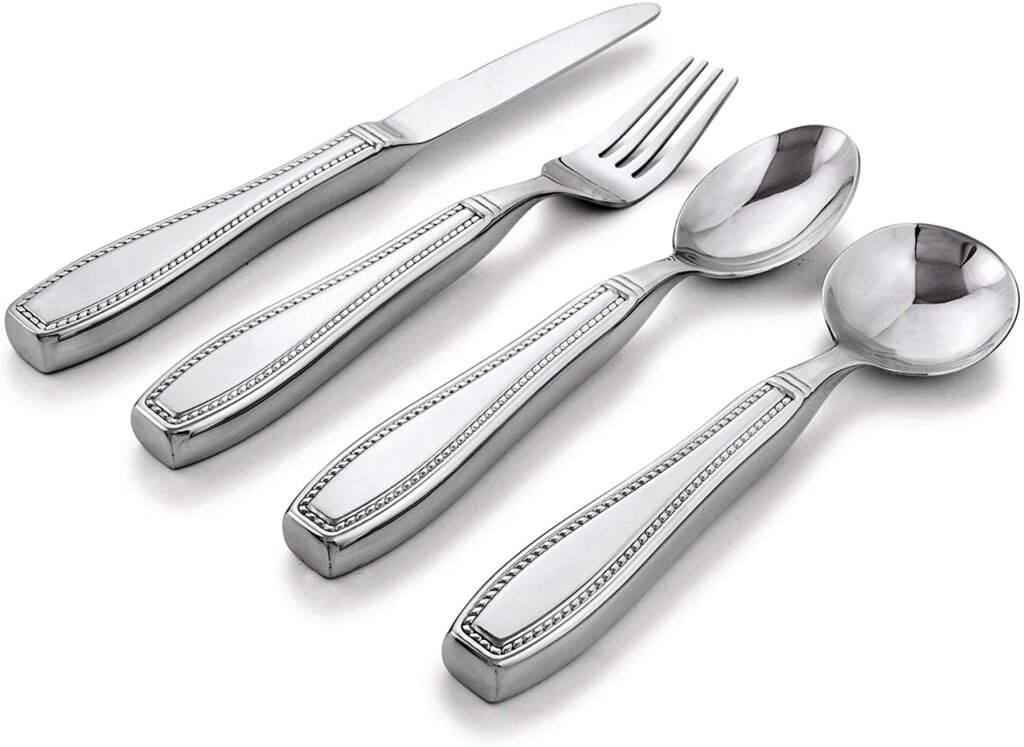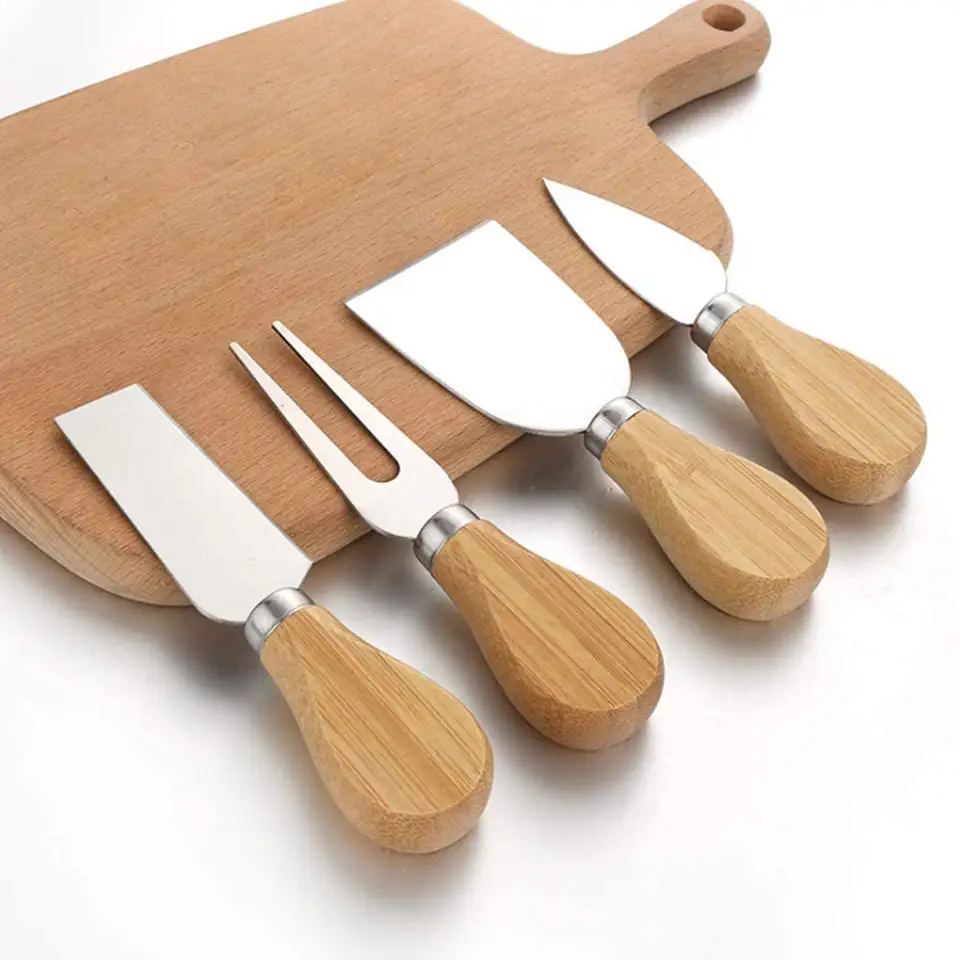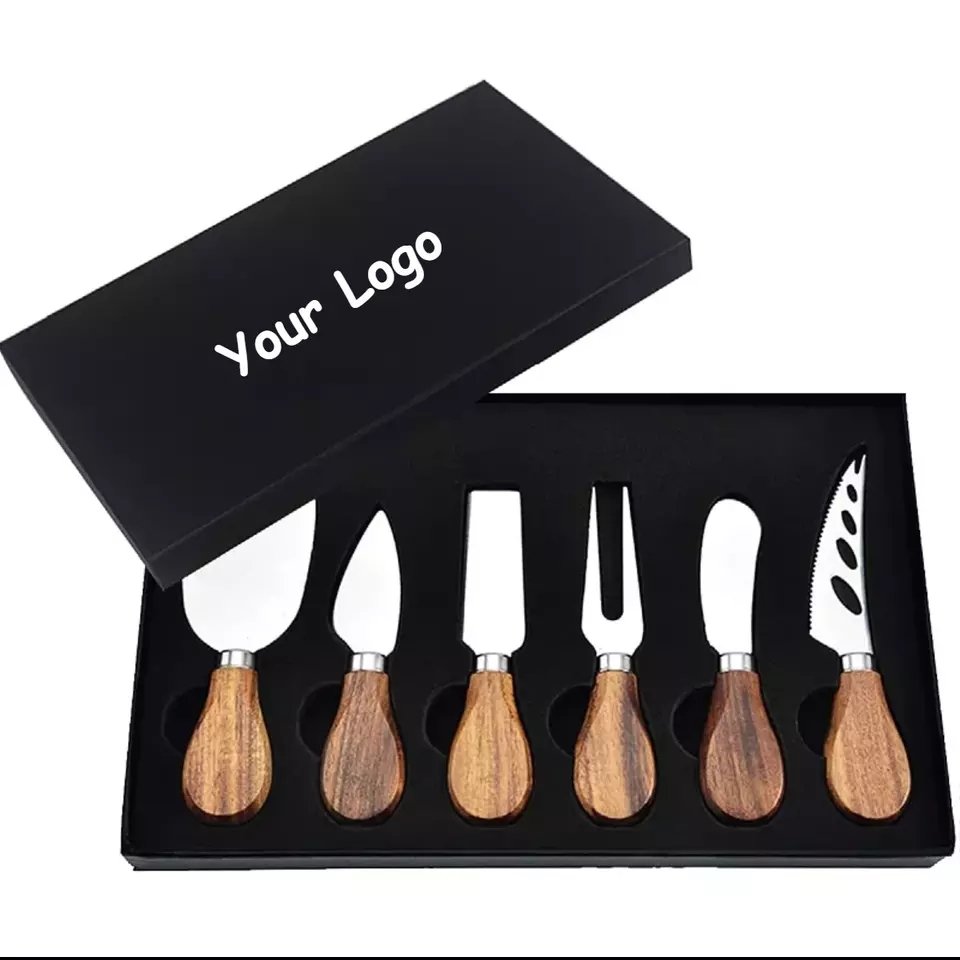If traditional utensils become a daily struggle, adaptive utensils offer a simple but powerful solution.
Adaptive utensils make eating easier for people with limited hand function, improving their independence and comfort at mealtime.
When utensils meet real human needs, they’re more than tools—they’re empowerment. In this post, I’ll explore what makes adaptive utensils valuable, how to choose the right ones, and what buyers like you should look for when sourcing or designing them.
Table of Contents

What are the best adaptive utensils for elderly with arthritis?
Arthritis makes gripping painful. Regular utensils become impossible to hold or use.
For elderly people with arthritis, the best adaptive utensils have thick, non-slip handles, lightweight materials, and angled heads for easier control.
Why handle design matters
The biggest issue with arthritis is joint pain and loss of dexterity. Standard slim metal handles increase strain. That’s why adaptive utensils with wide, cushioned, and textured grips are game-changers.
Types of features suitable for arthritis
| Feature | Why It Helps | Common Materials |
|---|---|---|
| Wide ergonomic grip | Reduces hand strain and finger pressure | Silicone, rubber, foam |
| Lightweight construction | Less weight means less fatigue | ABS, PP composite plastic |
| Curved or angled heads | Makes eating easier without wrist twist | Stainless steel + coating |
| Non-slip surface | Prevents dropping during tremors | TPR or soft-touch coating |
Two sides of the market
From a user’s side, elderly customers or caregivers are looking for utensils that reduce pain and increase confidence. They often trust medical recommendations or testimonials.
From a buyer’s side, especially rehab centers or elderly product resellers, the challenge is balancing cost with features that deliver genuine ease of use. Too many products claim “arthritis-friendly” without actual testing.
How to choose adaptive utensils for stroke patients?
Stroke can weaken one side of the body. Coordination becomes uneven.
Stroke patients need adaptive utensils with built-in support for one-handed use, adjustable angles, and anti-slip materials for stability.
One-handed solutions
Post-stroke users often experience hemiparesis—weakness on one side. Utensils must compensate for this.
Key Features Breakdown
| Feature | Benefit for Stroke Patients | Real-World Application |
|---|---|---|
| Angled spoon/fork heads | Aligns with hand movement limits | Easier to scoop food |
| Built-in support or hand straps | Helps those with weak grip or hand curl | Reduces need for tight grasp |
| Weighted utensils | Adds stability and reduces hand tremors | Prevents spills |
| Textured grip and wide handle | Easy to hold for limited mobility users | Less frustration at mealtime |
Buyer insight
As a supplier, I’ve noticed that rehab clinics often buy in sets—fork, spoon, knife—so offering kits with case packaging adds value. Many buyers also want dishwasher-safe options and certifications for medical use.

What makes a good spoon for hand tremors?
Hand tremors disrupt motion. They spill food and reduce confidence.
A good spoon for hand tremors should be weighted, stabilizing, and have a deep bowl that reduces spilling during hand movement.
Stabilization is everything
People with Parkinson’s or Essential Tremor need tools that don’t amplify their shaking. A spoon must stabilize, not just be “easy to hold.”
Feature Comparison
| Feature | Purpose | Example Products |
|---|---|---|
| Weighted handle | Counters small tremors | 170g–250g common range |
| Deep bowl spoon | Keeps food in while moving | More curve = less spillage |
| Gyroscopic mechanism | Advanced option for high tremor levels | High-end price, niche buyer |
| Soft-touch grip | Adds comfort and friction | Avoids slipping during use |
Think long-term use
When I design or source these products, I ask: Is this easy to clean? Is the weight adjustable? Not every user has the same strength. So a modular design—like detachable weights—is ideal.
Wholesale adaptive utensils: What to consider before bulk buying?
Bulk buying means scaling up. Mistakes cost more.
Before wholesale buying adaptive utensils, check usability, material safety, certifications, and packaging—especially for medical or senior-care markets.
What procurement teams look for
In my experience, B2B buyers ask three questions: Is it safe? Is it durable? Can I sell it easily?
Buyer Checklist Table
| Checkpoint | Why It Matters | What to Ask the Supplier |
|---|---|---|
| Material Certification | Ensures compliance (FDA/LFGB/REACH) | Do you have documentation? |
| Product testing | Validates claims (anti-slip, ergonomic) | Can I see testing reports? |
| Custom packaging available? | Easier for resale or gift sets | Can you do private labeling? |
| MOQ and lead time | Affects stock planning | What’s your capacity per month? |
The cost-value balance
The cheapest product often ends up being the most expensive. I always recommend sample testing—especially for adaptive utensils—since tactile feel is impossible to judge from photos.
Adaptive cutlery vs normal utensils: Why does it matter?
Some think utensils are just utensils. But users don’t.
Adaptive cutlery is specifically designed for users with physical limitations, offering functional features like ergonomic handles and angled heads not found in normal utensils.
What makes them “adaptive”?
Let’s compare based on function and feel.
Side-by-side Comparison
| Category | Normal Utensils | Adaptive Utensils |
|---|---|---|
| Handle design | Thin, standard | Wide, soft, sometimes angled |
| Material | Metal, ceramic | Lightweight plastic + rubber grip |
| Weight | Light to medium | Light or intentionally weighted |
| Purpose | General eating | Support for disability/dexterity loss |
| Cost per unit | $0.30–$1.50 | $1.50–$6.00+ (depends on function) |
Two user stories
A rehab clinic buyer once told me their patients refused to eat because the utensils “hurt to hold.” They switched to our adaptive models, and compliance shot up.

How to design adaptive eating utensils for children with disabilities?
Children aren’t just small adults. Their needs are different.
Designing adaptive utensils for disabled children requires safety-focused, playful, and easy-to-use features tailored to small hands and cognitive development.
Design for dignity and ease
| Design Element | Reason for Use | Recommended Strategy |
|---|---|---|
| Colorful visual cues | Stimulates interest and guidance | Use bright contrasting colors |
| Short, wide handles | Fits small hands better | Avoid long, thin handles |
| Rounded safety edges | Prevents oral or gum injuries | Avoid sharp points |
| BPA-free materials | Health & safety compliance | Test per EN14372 standard |
Don’t ignore packaging
Parents buy emotionally. A good product in a **friendly, reassuring package** will win repeat orders. For B2B buyers, like therapy clinics, dishwasher-safety and customization (left/right-handed) matter more.
What is the best material for adaptive utensils?
Material affects grip, safety, and durability.
The best materials for adaptive utensils are lightweight, non-toxic, anti-slip, and dishwasher-safe—typically soft silicone, ABS, or stainless steel with coating.
The anatomy of usability
A good adaptive utensil usually mixes materials: rubber for grip, ABS for structure, stainless steel for eating surface.
Material Pros and Cons Table
| Material | Pros | Cons |
|---|---|---|
| ABS Plastic | Rigid, light, cost-efficient | Can crack if too thin |
| TPE/TPR Grip | Non-slip, comfortable, durable | Might discolor with age |
| Silicone | Soft, safe, heat-resistant | Can tear if thin |
| Stainless Steel | Safe for eating, long-lasting | Heavier than plastic |
Global compliance matters
Many of my clients ask: Is this LFGB compliant? BPA-free? FDA certified? These certifications are non-negotiable in Europe, US, and Japan. If you export, test every batch.
Top 5 adaptive utensil manufacturers in China
Finding a reliable source is hard. But not impossible.
The top adaptive utensil manufacturers in China offer OEM/ODM support, certified materials, and stable quality control across mass production.
What to look for
I’ve worked with many factories over the past 10 years. Here’s what separates the best from the rest:
Top Manufacturer Qualities
| Criteria | Why It’s Critical | How to Check |
|---|---|---|
| In-house mold capability | Faster and cheaper for custom design | Ask for mold photos or video |
| Quality certifications | Ensures compliance in all major markets | ISO9001, BSCI, FDA, LFGB |
| MOQ flexibility | Important for pilot orders | Ideal: 500–1000 units |
| Export experience | Smooth logistics and documentation | Look for 5+ years history |
Top factories to consider
You’ll find reliable partners in Yangjiang, Ningbo, and Shenzhen. Many already serve brands in Europe or Japan. As a supplier myself, I’m happy to help connect serious buyers with the right source.





